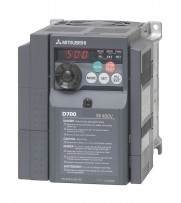Frequency Converter: A Key Element of Energy-Efficient Electric Drive
One of the most important components of any energy-efficient electric drive is the frequency converter. Its main function is to convert the variable three-phase voltage from the power supply into a constant frequency and amplitude output voltage with adjustable parameters. This allows us to control the speed of the motor shaft, optimizing drive operation, reducing energy consumption, and decreasing the likelihood of failures and breakdowns.
Basic Scheme of the Frequency Converter
Most frequency converters are implemented according to a classical scheme, which includes an intermediate constant current link and an autonomous voltage inverter.
Tasks Solved by the Frequency Converter
The frequency converter allows for the following tasks:
- soft starting and stopping of the motor, as well as regulating the rotational speed of the asynchronous motor shaft

- smooth adjustment of the performance of power drives
- reducing repair costs and energy needs
- quick and hassle-free integration into the technological process control system
- extending the service life of drive components and pipelines
- improving the reliability of the system through automated control, management, and diagnostics, which reduces the risk of failures and breakdowns.
Main Characteristics of Frequency Converters
- scalar control method according to the U/f characteristic with adjustment at eight points
- manual control capability via the built-in control panel
- automatic operation mode according to a specified schedule
- control via an external relay system using "dry contacts"
- remote control via RS-485 serial interface with the ability to connect an additional controller
Methods of Frequency Setting
- manually via the built-in control panel
- using a potentiometer on the panel
- using signals from the internal clock
- from external discrete inputs
- as an analog control signal 0-10V (or 0-20V at the setpoint input)
- command inputs via the RS-485 serial interface using the ModBus protocol
Motor Operation Control Modes
- direct frequency adjustment
- PID control
Basic Functions of the Frequency Converter
- soft starting and stopping
- automatic adjustment of the frequency and amplitude of the output voltage

- maintaining basic technological parameters of the pipeline using PID control